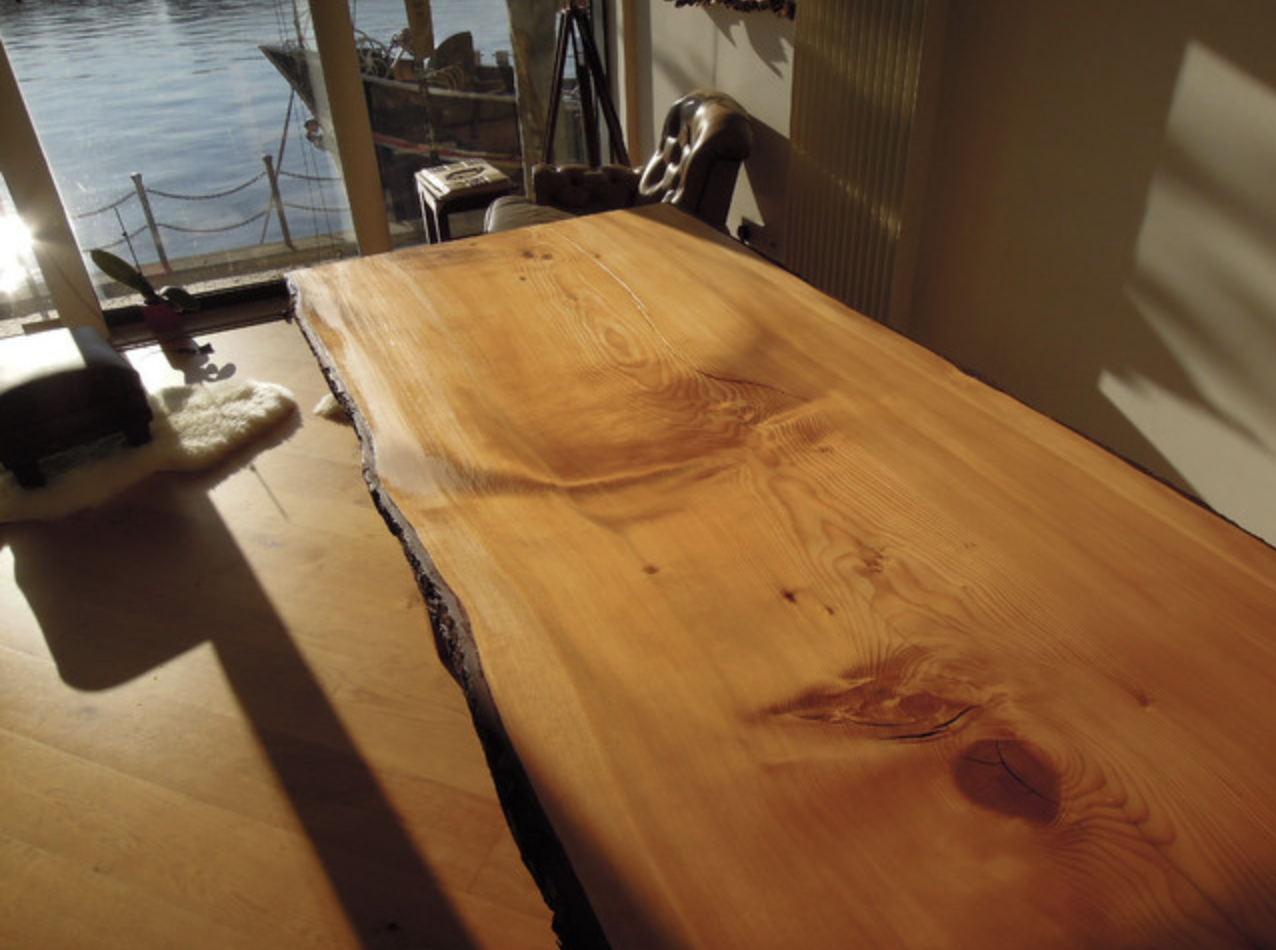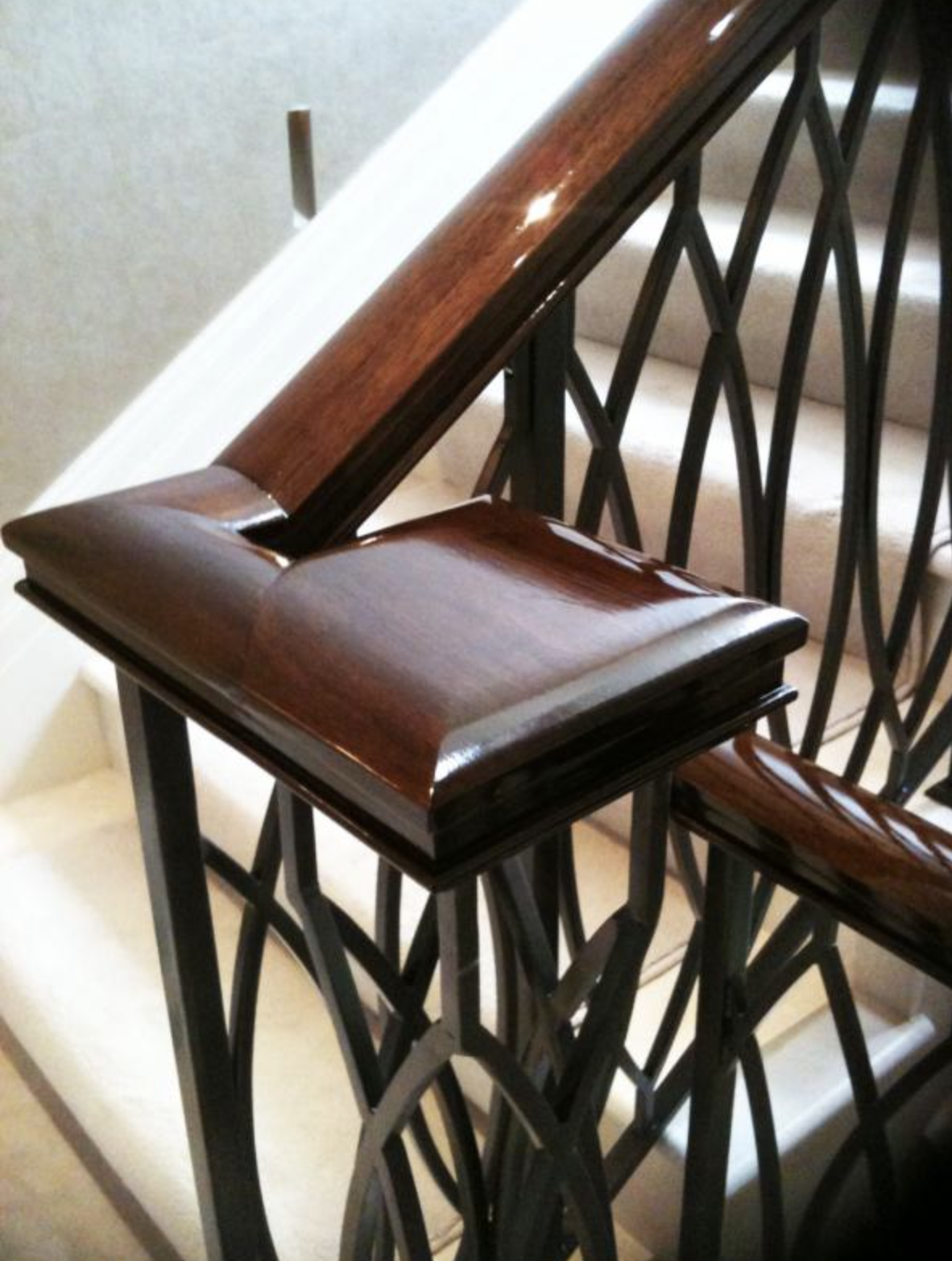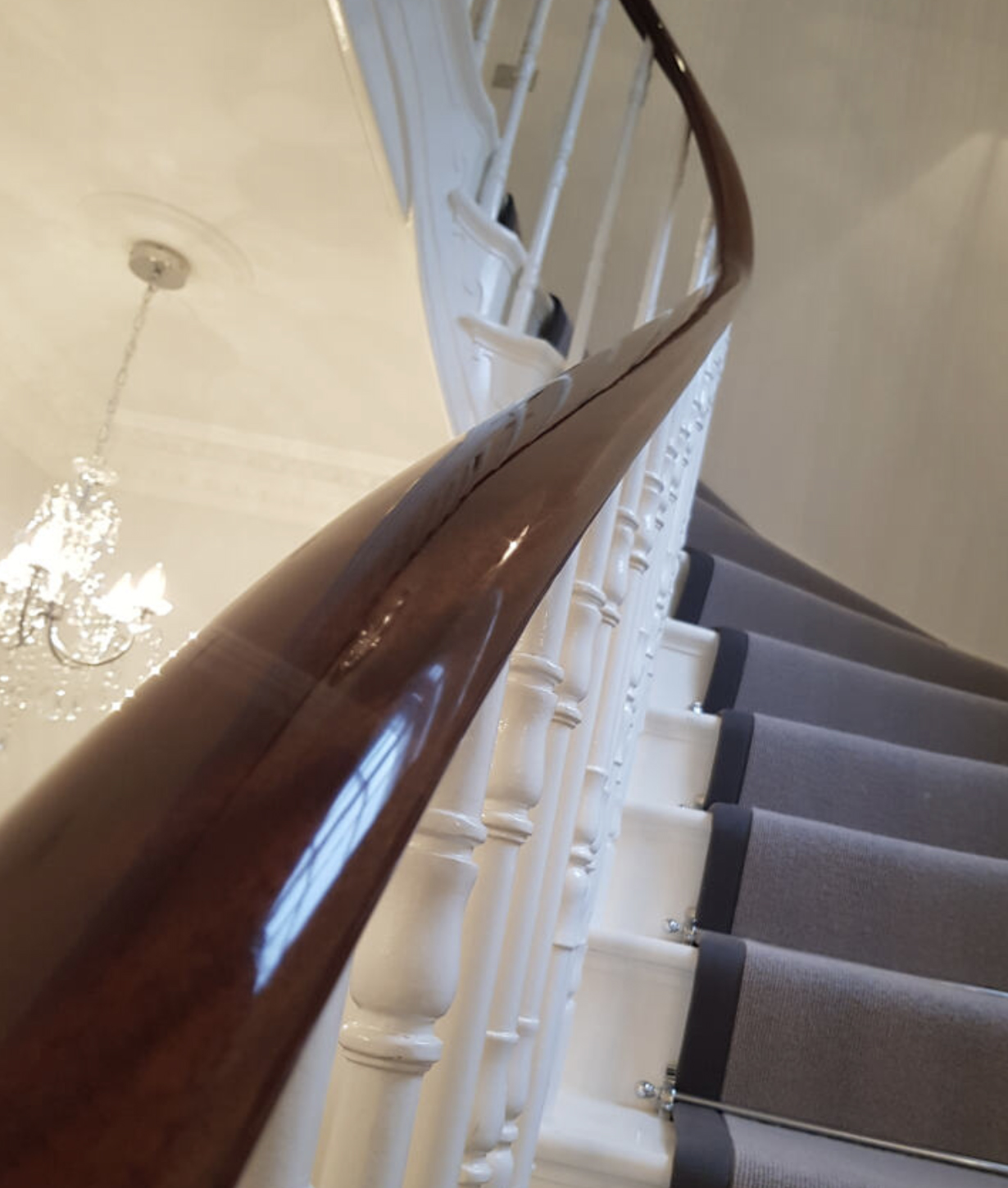French polish: the environmentally-friendly way to restore wood
Many of us reach for a pot of paint when wooden furniture starts to look tired. Is that because we've forgotten about the noble art of French polishing, which restores wood to its former glories? Abby Trow talks to expert Dan Norris

French polishing - which is not something you get done at a nail bar - dates back to the 15th century and uses shellac as its principal ingredient. Expert Dan Norris says if you love wood and want to see wood, not paint, then French polish is the answer to returning wood to its former glories. Pictured above: solid Cedar of Lebanon dining table finished with a French polishing technique.
When wooden furniture is faded, scratched and covered in water marks, many of us either take it to the local second-hand store, the recycling centre, or we think we'll be very good and upcycle it by painting it.
But if you actually like the beauty of wood, especially if your piece is made from a hardwood such as mahogany that has intrinically beautiful graining, to mask it over with paint is, frankly, criminal.
Why not, instead, look up your local French polisher, who should be able to restore the wood so the piece looks much as it would have done when it was new.
Dan Norris of London-based Paleamber, a firm that is working hard to get us to think about French polishing as a first port of call when it comes to restoring or rejuvenating tired wood, whether it's in the form of handrails, doors, floors, desks, bureaux, dining tables, chairs, mirror surrounds, or even wooden kitchens.
'French polish is simply a beautiful way to finish old and new timber,' he says. 'It has a long history and the techniques and materials have been perfected over hundreds of years.
'French polish is a window on the true beauty of the timber. As the layers of finish are built up, they bring out all the subtle nuances and details in the wood that improve with age as the colours in the timber become richer and shine through. It’s the only finish that can achieve this.'
What is French polish?
French polishing started to be widely practised early in the 18th century when the tools and techniques used today were refined by the French - hence the name French polishing, explains Norris.
The main ingredient of the polish is shellac, a resin secreted by the Lac beetle that lives on trees in India and Thailand. The resin flakes left on trees are collected and mixed with alcohol to make a liquid shellac, which is applied to wood.
It's an eco-friendly product and is used in conjunction with stains and beeswax.
How does it differ, to say, polishing with wax?
Applying French polish properly doesn’t work in the same way as other products, says Norris.
'French Polishers will often be asked when they start a job how many coats they'll be applying. The answer is that when polishing you don’t really apply coats.
'French Polish is a thin liquid - much thinner than varnish - and this allows the polisher to apply the it with a tool called a rubber. This is a pad made from soft cotton, similar to cotton wool, covered in a premium grade cotton material.
'Polish is added to the cotton pad inside the rubber and the cotton material placed on top. This simple tool, used correctly with a little oil as a lubricant, will work the shellac polish deep into the timber and through different techniques and hand motions will slowly build up a beautiful film of polish on the surface, with no brush or spray marks.
'Done correctly it has an amazing effect. Not only does it nourish and protect the timber but it produces a deeply lustrous finish that no other finish, such as wax or lacquer, can achieve.'
Eco merits of French polish
Norris makes the point that too many people give up on wooden furniture because it looks worn, and while more of us do now look to recycle, it's estimated that in the UK alone (according to www.woodrecycling.org.uk) some eight million tonnes of wood is wasted each year. 'This is an alarming statistic, particular as most of it is sent to landfill unnecessarily.
'A key area where businesses such as ours can help is by saving timber furniture and internal timber fixtures. Unless severely damaged, it’s seldom that a wood product actually needs to be scrapped. In most cases it is merely the finish that is damaged. French Polishing is very much about sustainability since it allows furniture to be restored rather than thrown out, so saving valuable timber and reducing the need for trees to be felled for new products.
'And if it's a change in colour or style that's required, this can readily be achieved without scrapping the timber.'
A good French polisher will use water-based rather than oil or solvent-based products where possible, water-borne lacquers when polishing floors, and natural pigments for colours.
Note that while French polishing is associated with a high, lacquer-like shine, you can have matte or satin finishes, and if you have a piece of wooden furniture in a shade of brown you dislike, a French polisher can stain it in another colour. So a teak table can be stained the colour of rosewood or mahogany if that is what you'd prefer.
For Norris, the wonder of French polishing is in its ability to breathe new life into pieces of furniture that may appear to be completely wrecked. And while it's a craft that is associated with the antiques trade, you'll probably find that most houses in the country have items of wooden furniture that would benefit from the attention of a French polisher.
Wood is, after all, a beautiful natural material that deserves to be seen at its best.
How to find a good French polisher
A few things to look for:
• Make sure they are traditional polishers. Some only use lacquers and spray guns, which are only appropriate for modern finishes, aren't eco-friendly and don't look anything like a traditional finish. Always ask what products will be used.
• Some polishers specialise in only one area, such as floors or exterior woodwork, so make sure they're capable of the work you need done. Floor polishers are unlikely to be appropriate for furniture.
• Ask for photographs of their work. French polishing is about revealing the true beauty of timber so look to see how they have achieved this for other customers.



